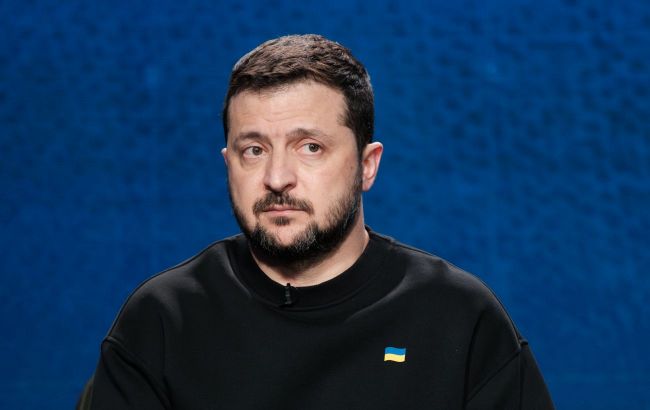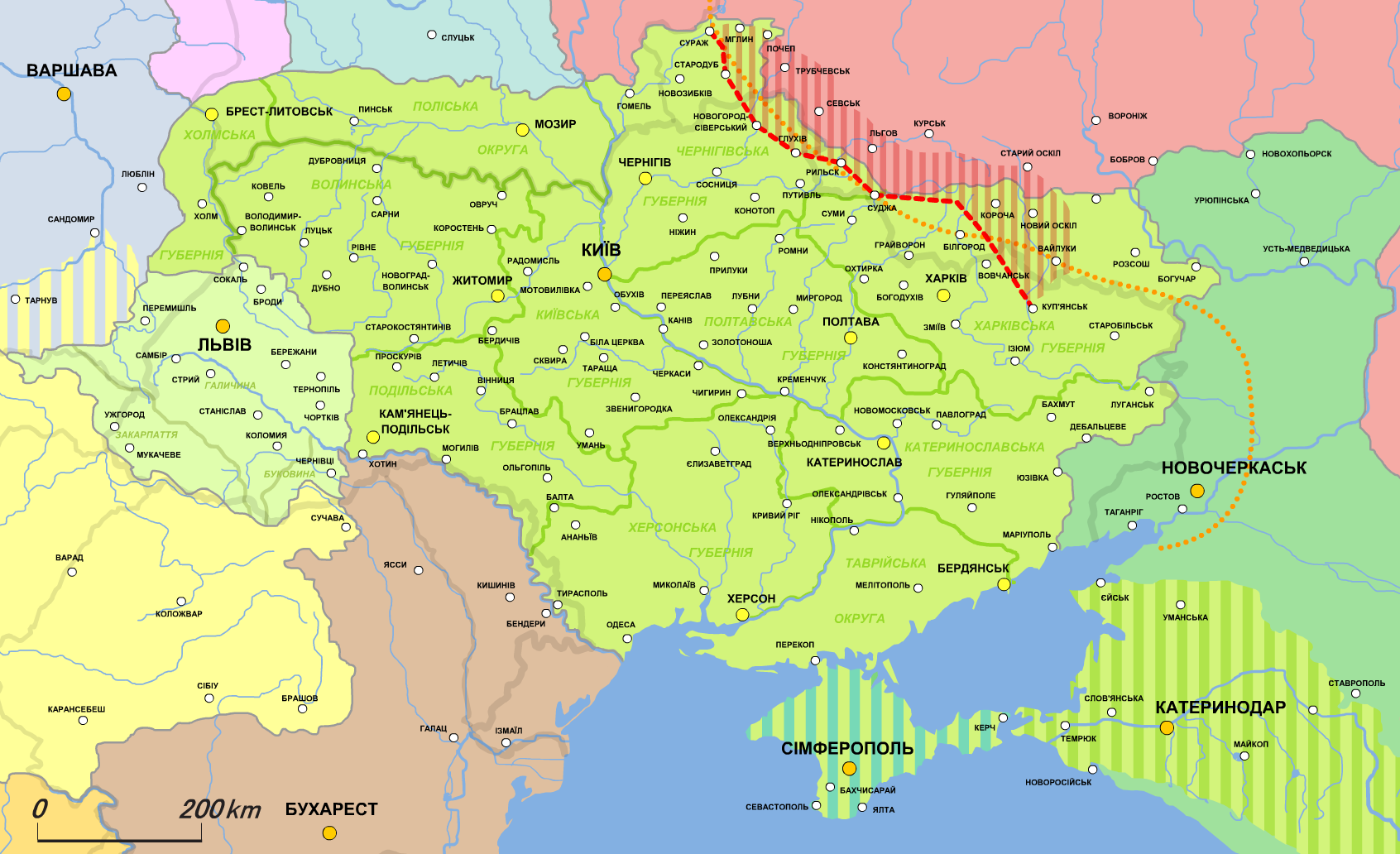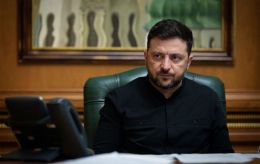Slap in Putin's face? Why Zelenskyy signs decree on Russian lands historically inhabited by Ukrainians
 Photo: President of Ukraine, Volodymyr Zelenskyy (Vitalii Nosach, RBC-Ukraine)
Photo: President of Ukraine, Volodymyr Zelenskyy (Vitalii Nosach, RBC-Ukraine)
President Volodymyr Zelenskyy has signed a decree regarding historically Ukrainian-populated territories within the Russian Federation. Traditionally, these refer to border regions of several provinces where Ukrainians reside compactly.
During the preparation of this material, the following sources were utilized: Presidential Decree of Ukraine No. 17/2024, articles by philosopher and professor at the National University Ostroh Academy Petro Kralyuk in the newspaper The Day, and comments from historian Roman Kabachiy.
Zelenskyy's decree: What the President proposes and why
The presidential decree was signed on the Day of Unity of Ukraine. In the explanation, it is stated that Russia has oppressed Ukrainians for centuries, erasing their national identity and violating their rights, particularly in Kuban, Starodubshchyna, Northern and Eastern Sloboda Ukraine. Today, these territories include the Belgorod, Bryansk, Voronezh, Kursk, Rostov regions, and the Krasnodar Krai.
The decree also emphasizes the necessity for Russia to fulfill its obligations to ensure education in the Ukrainian language and other rights of ethnic Ukrainians. These rights include civic, cultural, religious rights, as well as the right to access Ukrainian-language media and peaceful assemblies. In this context, Zelenskyy instructed the Cabinet of Ministers to prepare and submit to the National Security and Defense Council a plan of action to preserve the identity of Ukrainians in Russia.
What plan should include:
-
collecting and studying facts about crimes, forced Russification, political repression, and deportations, as well as restoring and preserving historical memory, including by establishing a center for these issues
-
countering disinformation and propaganda about the history and current situation of Ukrainians and other peoples enslaved by Russia by engaging scholars, experts, and organizations of Ukrainians abroad in activities aimed at debunking Russian myths about Ukraine
-
facilitating interaction between Ukrainians and other peoples enslaved by Russia
-
preparing and spreading materials in Ukraine and the world about the more than thousand-year history of the Ukrainian state, historical ties of the territories inhabited by ethnic Ukrainians with Ukrainian state entities in different historical periods
-
coverage in educational programs and textbooks of the true history of ethnic Ukrainians in the lands inhabited by them within the Russian Federation
In addition, the Ministry of Foreign Affairs should take into account the provisions of the decree to develop a comprehensive strategy for Ukraine's interaction with the Ukrainian community in the world.
 Ethnic Ukrainian lands claimed by the Ukrainian state in 1917-1921 (photo by wikipedia.org)
Ethnic Ukrainian lands claimed by the Ukrainian state in 1917-1921 (photo by wikipedia.org)
Roman Kabachiy, a historian and senior researcher at the National Museum of the History of Ukraine in World War II, considers the decree "a kind of trolling." As in times of war, it is primarily about regaining one's territory and making people feel like Ukrainians on their land within the borders of 1991, thinks historian.
"I am quite skeptical about it (the decree - ed.), because as a state, Ukraine has done nothing (in this direction - ed.) for 30 years. Moreover, it closed consulates in ethnic lands, for example, in Brest, Belarus. As for Ukrainians in Russia, they were always being abused, societies and libraries were closed, books were confiscated, and Ukraine had virtually no influence on this process," he said in a commentary.
On the other hand, the example of the Kuban Cossack Choir, which was founded in the early nineteenth century, eloquently illustrates what is really important to those who are commonly called ethnic Ukrainians.
"The director, Viktor Zakharchenko, supported the occupation of Crimea. Why did he do that? Because he was afraid of reprisals against the choir. He severed all ties with the country for which he recorded four discs of the 'Musical Offering to Ukraine,' just so that the Kremlin regime wouldn't touch them," the historian stressed.
In his opinion, the president, on Unity Day, decided to hint that Ukrainians exist in Russia.
"Physically, they may be on these lands, but they are no less intoxicated by propaganda than ethnic Russians... So there is unlikely to be a significant effect on them. We need to work with those Ukrainians who feel a connection to Ukraine, and these are Western diasporas so that our people do not dissolve. Ukrainian revival in Russia will only be possible when the Russian Federation collapses. Only in such case," Kabachiy added.
Starodubshchyna, Eastern Slobozhanshchyna, and Kuban. What's important to know
Russian President Vladimir Putin has repeatedly claimed that, after the dissolution of the USSR, Russian territories were supposedly ceded to Ukraine. However, this is far from true, as Russia primarily took lands inhabited by Ukrainians, subjecting them to Russification, writes philosopher and professor at the National University Ostroh Academy, Petro Kralyuk, in a series of articles for the newspaper The Day.
- Starodubshchyna
This territory holds special significance. Today, it is part of the Bryansk region but has close historical ties to Ukraine. After the times of Kiyv Rus, it was part of the Grand Duchy of Lithuania, later passed to the Moscow State, and in the early 17th century became part of the Polish-Lithuanian Commonwealth. During the uprising of Bohdan Khmelnytsky, Ukrainian Cossacks occupied it, forming the Starodub Cossack Regiment.
After the Pereyaslav Council, Starodubshchyna again became part of Muscovy and later the Russian Empire. However, it remained one of the centers of Ukrainian life. Cossack chronicles developed here and played an important role in the formation of Ukrainian national consciousness. For example, the Chronicle of the Samovydets was created and became a bestseller for historians and writers of the nineteenth and twentieth centuries. It was widely used by Mykhailo Kostomarov, Dmytro Yavornytskyi, Panteleimon Kulish, Taras Shevchenko, Oleksandr Dovzhenko, and others.
Based on Cossack chronicles, Semen Divovych created the poem The Conversation of Great Russia with Little Russia in 1762. It suggests that these are autonomous parts of one state. The idea of autonomy is continued in The History of the Rus', which presents the history of Ukraine as a separate land with its own political traditions, different from those of Russia.
Many figures of Ukrainian culture and political life were born in or were associated with Starodubshchyna. For example, Hetman Petro Skoropadskyi, who studied at the Starodubsk gymnasium, or Lesia Ukrainka, whose father was born in the town of Mhlyn.
According to the terms of the Brest Peace of 1918, Starodubsk became part of the Ukrainian People's Republic, but in 1919 the Bolsheviks made it part of the Gomel province of the RSFSR. In 1926, most of the province was given to Belarus, Starodubshchyna was given to the Russian Bryansk province, and only a small part, the Semenivska volost, was transferred to Soviet Ukraine.
- Eastern Slobozhanshchyna
Its lands are part of the Kursk, Belgorod, Voronezh, and Rostov regions of the Russian Federation. Eastern Slobozhanshchyna became a place of active migration of Ukrainians in the second half of the seventeenth century, which was associated with Khmelnytsky's uprising and the Ruin. The Ostroh, Sumy, and Okhtyrka Cossack regiments were formed on this territory.
In 1670, the Ostroh regiment took part in the uprising of Stepan Razin, who was probably a Ukrainian on his father's side. After the uprising was suppressed, the regiment was led by people loyal to Moscow. The Okhtyrka regiment covered the territory of the present-day Sumy, Poltava, and Kharkiv regions of Ukraine and the Belgorod region of the Russian Federation. The Sumy Regiment was located on what is now mostly Ukrainian territory, but also partially on the lands of modern Russia. In particular, it included Sudzha, the current district center in the Kursk region. The Cossack regiments were disbanded in 1765.
The bulk of the population of Eastern Slobozhanshchyna identified themselves as Cossack-Ukrainians, spoke Ukrainian, and had their own household culture, which markedly distinguished them from Russians, writes Petro Kralyuk. Among the natives, Nikita Khrushchev, one of the Soviet leaders who, despite all the ambiguity, played a role in dismantling Joseph Stalin's repressive regime, is particularly notable.
Eastern Slobozhanshchyna could well have become part of the Ukrainian state in 1917-1921 if it had been preserved. In particular, the UPR included several districts of Kursk and Voronezh provinces, and almost the entire region was annexed under Petro Skoropadskyi. But later it was seized by the Bolsheviks, who did not want to hand it over to the puppet Ukrainian SSR. According to the 1926 census, the Ukrainian population dominated in many districts, but in the 1930s active Russification began, and the percentage of people who considered themselves Ukrainians has been steadily decreasing until the present day.
- Kuban
After the liquidation of the Zaporizhian Sich in 1775, the imperial government resettled a portion of the Cossacks to the lands between the Kuban River and the Sea of Azov, which had been taken from the Ottoman Empire. In a short time, nearly 25,000 Ukrainian Cossacks with their families moved there, forming 40 kurins that were part of the Black Sea Cossack Host.
Former Zaporizhians found themselves in challenging survival conditions due to constant attacks from Turks, Adyghe people, and other Caucasian nations. The Black Sea Cossack Host was predominantly replenished by Cossacks from the Chernihiv, Poltava, and Kharkiv provinces. The main resettlement campaigns occurred in the first half of the 19th century. One of the initial stages of Russification took place in 1860 when the Black Sea Cossack Host merged with part of the Linear Cossack Host, composed of Russians. Since then, the united force began to be called the Kuban Cossack Host.
"Kuban Cossacks communicated in the Ukrainian language and accordingly identified themselves as Ukrainians. According to the census conducted in Imperial Russia in 1897, over 900,000 Ukrainians lived in the Kuban region, constituting 47.4% of the population. In the region, they were the largest ethnic group," writes Kralyuk.
After the 1917 revolution, a movement for the creation of their own state unfolded in Kuban. In February 1918, the Kuban People's Republic was proclaimed. Notably, among the local Cossacks, there was a well-known idea of joining the Ukrainian state. Hetman Petro Skoropadsky even received a delegation and generally agreed to the proposal, but ultimately, Kuban couldn't be saved from the Bolsheviks. The Ukrainian Cossack movement was eventually taken under the control of the White Army led by Anton Denikin and subsequently eliminated.
In the first half of the 1920s, Kuban resisted the Bolsheviks. Because of this resistance, the central government agreed to Ukrainianization. By 1926, Ukrainians constituted 66.58% of the population (over 3 million people). In 1932-1933, Ukrainianization was reversed, and education in schools and official business abruptly shifted to the Russian language. Russians from the north were resettled in Kuban, and the Ukrainian dialect was dismissed as "Cossack talk" and purportedly a dialect of the Russian language.
Officially, Ukrainians in the Krasnodar Krai now make up about 1%. Moscow took control of the Cossack revival and imposed stereotypes of the "Russian world." It is not surprising that in 2014, many 'Kuban Cossacks' supported the Russian invasion of Crimea and the conflict in Donbas.
Today, it is challenging to determine the number of ethnic Ukrainians living in Starodubshchyna, Kuban, Eastern Slobozhanshchyna, etc. At the time of the USSR's dissolution, there were approximately 4 million, and in the last census, 1-1.5 million identified as Ukrainians, according to historian Roman Kabachiy.
"The dynamics can be traced in the Krasnodar Krai, where Ukrainians were recorded as Russians. They may claim to speak in 'balachka,' identify themselves as Ukrainians who were Russified, but that's only for those who understand. Mostly, they will say they are 'Cossacks' by nationality. So, honestly, I have little hope that these people can be worked with," he added in a conversation with RBC-Ukraine.
Humanitarian and political step. Not a hint at territorial claims
It should be noted that the Volga region, the 'Gray Wedge' (the south of the Omsk and Novosibirsk regions and the Altai Territory), and the 'Green Wedge' (the Far East) are also historically inhabited by Ukrainians. And also the Beresteyshchyna, the territory that is part of modern Belarus. Which, despite its support for Russian aggression, is not mentioned in the presidential decree.
According to Kabachiy, this is because the Ukrainian government is not ready to confront and makes it clear that it is interested in the collapse of the Russian Federation, but not Belarus.
"Otherwise, they might have mentioned the Brest region, where people do speak Ukrainian. I once traveled by train from Brest to Terespol, and the whole train spoke Ukrainian. Apparently, they are still afraid to work with Belarusians in the same way as with Russians. They may claim that Ukraine is encroaching and so on. So in this case, Ukraine is trying to save face with the Belarusian people," the historian explains.
It is noteworthy that regarding Russia, we are talking about the territories that in the winter of 2023, the head of Ukrainian military intelligence, Kyrylo Budanov, called the future security buffer. In an interview with Forbes, he noted that he could not comment on a possible advance into Russian territories after reaching the 1991 borders, although he added that "a 100 km zone is justified, but 40 km would be more or less normal." According to him, a security zone near Ukraine's borders is a necessity. This means a buffer on the lands of ethnic Ukrainians.
"If we believe that Russia will collapse, then these regions will somehow form a buffer. But whether it will have a Ukrainian character, I'm not sure. After they shelled Belgorod, do we want it to become our buffer? I don't believe so," emphasizes Kabachiy.
Regarding the presidential decree on territories historically populated by Ukrainians in Russia, it is primarily directed at the domestic audience. It should not be interpreted as a hint at territorial claims.
"It seems to me that it's more of a humanitarian-political step. On one hand, internally, we need to study this heritage as much as we can. Externally? We'll see how it goes because these people are entirely under Russian propaganda," said the historian.
According to him, many of these "Ukrainians" within the Russian army are fighting against Ukraine.
"Try talking to them; they have long abandoned their homeland. These are post-imperial people, and it's impossible to work with them," he added.

